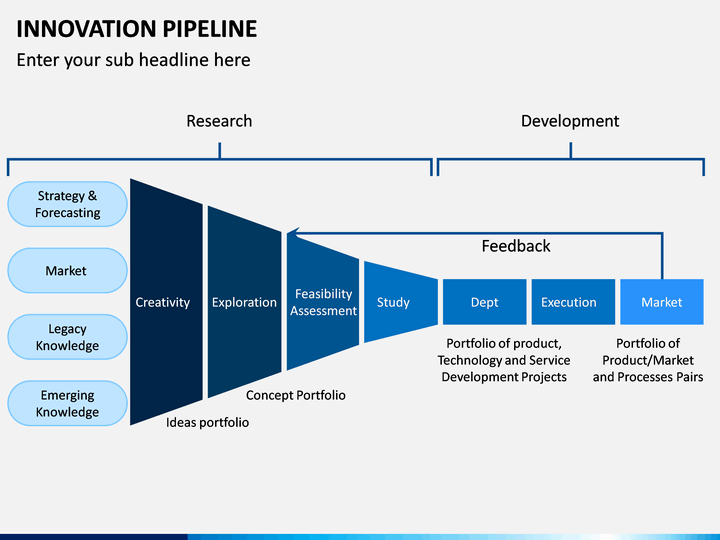Innovation Pipeline
What is Innovation Pipeline
Definition:
The Innovation Pipeline refers to the structured process through which ideas are generated, evaluated, developed, and implemented within an organization or ecosystem. It represents the flow of innovation activities, from ideation to execution, and encompasses stages such as idea generation, validation, prototyping, testing, and scaling.
Analogy:
Think of the Innovation Pipeline as a well-engineered irrigation system that channels creativity and ideas from diverse sources and nourishes them through various stages of development. Similar to how water flows through different channels to irrigate crops, the Innovation Pipeline guides ideas through stages of refinement and transformation into tangible innovations.
Further Description:
The Innovation Pipeline is characterized by systematic stages, methodologies, and tools designed to streamline the innovation process and maximize the success rate of innovation initiatives. It involves cross-functional collaboration, feedback loops, and iterative cycles of experimentation to identify, prioritize, and develop ideas with the highest potential for impact and value creation.
Key Components of the Innovation Pipeline:
- Idea Generation: The process of soliciting, collecting, and generating new ideas from internal and external sources, including employees, customers, partners, and industry trends.
- Idea Evaluation and Prioritization: The systematic evaluation, screening, and selection of ideas based on criteria such as feasibility, market potential, strategic alignment, and resource requirements.
- Prototype and Test: The development of prototypes or minimum viable products (MVPs) to test and validate key assumptions, gather user feedback, and iterate on product or service features.
- Pilot and Scale: The implementation of pilots or small-scale deployments to assess real-world performance, gather performance data, and inform decision-making on broader deployment and scaling efforts.
- Feedback and Iteration: The continuous gathering of feedback from stakeholders, users, and market dynamics to inform refinements, adjustments, and improvements throughout the innovation lifecycle.
Why the Innovation Pipeline Matters:
The Innovation Pipeline serves as a strategic framework for organizations to systematically drive innovation, manage risk, and maximize the return on investment in innovation initiatives. It fosters a culture of experimentation, agility, and continuous improvement, enabling organizations to adapt to changing market conditions, seize emerging opportunities, and stay ahead of the competition.
Key Takeaways:
- The Innovation Pipeline guides ideas through structured stages of development, from ideation to execution, to maximize their potential for impact and value creation.
- Cross-functional collaboration, systematic evaluation, and iterative experimentation are key principles of the Innovation Pipeline.
- Continuous feedback loops and data-driven decision-making drive refinements and improvements throughout the innovation lifecycle.
- The Innovation Pipeline empowers organizations to adapt to change, drive growth, and maintain competitive advantage in dynamic markets.





